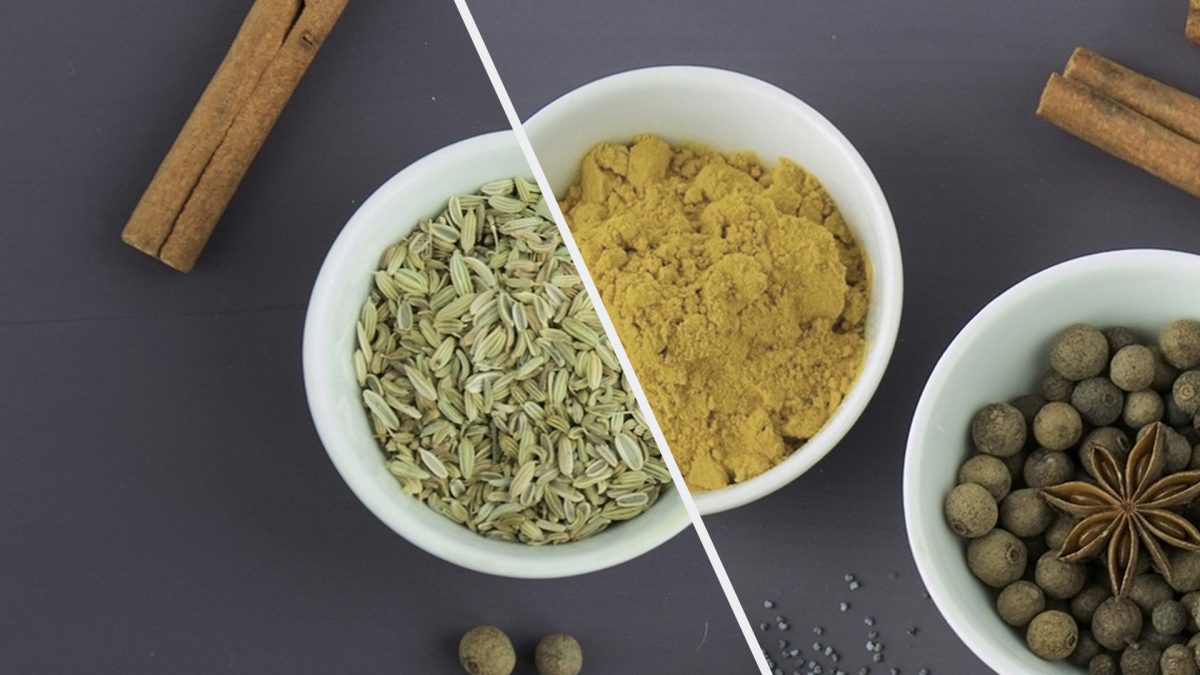Ninety percent of women report having painful menstrual cramps at least some of the time. Around the Mediterranean, fennel seeds have been traditionally used to relieve painful menstruation. We call them seeds, but they’re actually whole little fruits. I discuss their effectiveness in the treatment of menstrual cramps in my video Fennel Seeds for Menstrual Cramps and PMS. It’s hard to create placebo seeds, so researchers used fennel seed extract to put it to the test. The women started out rating their pain as six out of ten, which then went down to a four within an hour after the taking the fennel seed extract. Fifty-two percent of the women rated the fennel seed treatment as excellent, compared with only 8 percent of those in the placebo group who were just unknowingly given placebo capsules just containing flour.
But women don’t take flour for cramps; they take drugs such as ibuprofen. Mefenamic acid is in the same class of nonsteroidal anti-inflammatory (NSAID) drugs and may actually work better than ibuprofen, but it is not available over the counter. How did it do against an extract of fennel seeds? In a head-to-head study, most women started out in severe pain but ended up pain-free after treatment, and the fennel worked just as well as the drug class considered the treatment of choice––but without the drug’s side effects, which include diarrhea, rashes, autoimmune anemia, and kidney toxicity.
The drug also doesn’t help with the other symptoms of bad periods. During menstruation, women can feel nauseated, out of sorts, weak, achy, and diarrheic. But when put to the test, fennel seeds seemed to help; however, the control group wasn’t given a placebo, so we don’t know how much of that was a placebo effect.
One downside of taking fennel is that women bleed about 10 percent more. Menstrual cramps are caused by the uterus contracting so hard its blood supply is compromised, and we think fennel works through muscle relaxation. It also helps with infant colic, which is thought to be due to intestinal spasms. The advantage of fennel there, too, is the lack of side effects, unlike the drug commonly used for colic. Indeed, dicyclomine hydrochloride can work a little too well to get your baby to stop crying––by developing side effects like death.
Ginger is effective for cramps and reduces bleeding when an eighth of a teaspoon of ginger powder is taken three times a day during one’s period. This is important since up to 18 million young women in the United States experience iron deficiency anemia due to heavy menstrual bleeding. In a study, the amount of blood loss was estimated using a scoring system that gave points for level of saturation and clot size. On ginger, they went from half a cup per period down to a quarter cup. Ginger appears to be a highly effective treatment for the reduction of menstrual blood loss. It is cheap, at only about 6 cents a month, easy to use, and may have fewer side effects than medications and invasive approaches, even sometimes fewer than placebo! The researchers used lactose (milk sugar) for the sugar pills, which may have caused the reported flatulence.
Ginger may also work better for premenstrual syndrome (PMS). An eighth of a teaspoon twice a day of ginger powder for a week before one’s period yields a significant drop in PMS mood, physical, and behavioral symptoms, whereas fennel may help with PMS anxiety and depression but not with the emotional or physical symptoms.
Other dietary interventions that may help include a reduction in salt and animal fat consumption, which I address in my video Dietary Treatment for Painful Menstrual Periods.
We should use whatever works––because sometimes, evidently, PMS symptoms can lead to death. Case in point: Christine English who, at that time of the month, ran down her husband. Accepting PMS as a defense, the court released her with one year of probation.
For more on treating menstrual pain and PMS, see:
- Plant-Based Diets for Breast Pain
- Flaxseeds for Breast Pain
- Saffron for the Treatment of PMS
- Wake Up and Smell the Saffron
- Ginger for Nausea, Menstrual Cramps, and Irritable Bowel Syndrome
In health,
Michael Greger, M.D.
PS: If you haven’t yet, you can subscribe to my free videos here and watch my live, year-in-review presentations:
- 2012: Uprooting the Leading Causes of Death
- 2013: More Than an Apple a Day
- 2014: From Table to Able: Combating Disabling Diseases with Food
- 2015: Food as Medicine: Preventing and Treating the Most Dreaded Diseases with Diet
- 2016: How Not To Die: The Role of Diet in Preventing, Arresting, and Reversing Our Top 15 Killers
